Hot Topics
 by Maggie Mueller
Updated On Aug 20, 2024
Published On Aug 9, 2024
Basic iPhone Tips Ideal for Newbies
by Maggie Mueller
Updated On Aug 20, 2024
Published On Aug 9, 2024
Basic iPhone Tips Ideal for Newbies
Setting up a new iPhone can take some time—anywhere from 20 minutes to an hour—because the process may involve several steps, including updating to the latest iOS version.
If you find yourself stuck on a software update that seems like it will never finish, or if you're eager to start using your new iPhone without updating to the latest iOS, you might be wondering if it's possible to skip the update. This is especially true if your device is jailbroken and you want to keep it that way.
In this guide, we'll answer that question and walk you through how to skip the software update when setting up your new iPhone.
If you have choosen to transfer data from iCloud, a computer, another iPhone, or an Android device to your new iPhone, the setup process will likely require you to update the software first. In these cases, there isn't an option to skip the update on the software update screen.
However, if you choose not to transfer any data or apps during the "Data & Apps" or "Transfer Your Data & Apps" screen on your new iPhone, you won't be forced to update iOS. This allows you to skip the software update during the setup process.
Keep reading to learn how to cancel a stuck software update and how to skip the update in the future by following the steps outlined below.

If the update process seems stuck, it might be because there are millions of other iOS users trying to update their devices at the same time. This can happen if you try to set up the device soon after Apple announces the release of an iOS update. In this case, the best thing to do is simply wait for a time when the servers are not too overwhelmed.
If waiting doesn't help, you can then try to restart the device, which should stop the process and allow you to try again. If you're unable to cancel the update by restarting your iPhone, try force restarting your iPhone instead.
A forced restart will take you back to the first step of the setup process and you can choose not to transfer data to skip the software update process on your new device.
Here's how to force restart your iPhone:
For iPhone 8 and Later: Press and release the Volume Up button, press and release the Volume Down button, and then press and hold the Side button. Release it when the Apple Logo appears and allow your device to restart.

For iPhone 7 and 7 Plus: Press and hold the Side and the Volume Down buttons at the same time. Release them when you see the Apple Logo on the screen.

For iPhone 6s and Earlier models: Press and Hold the Home and the Power buttons at the same time until the Apple logo appears on the screen.

After your iPhone restarts, you need to select "Don't Transfer Apps & Data" during setup to avoid being forced to update iOS. Here's how:
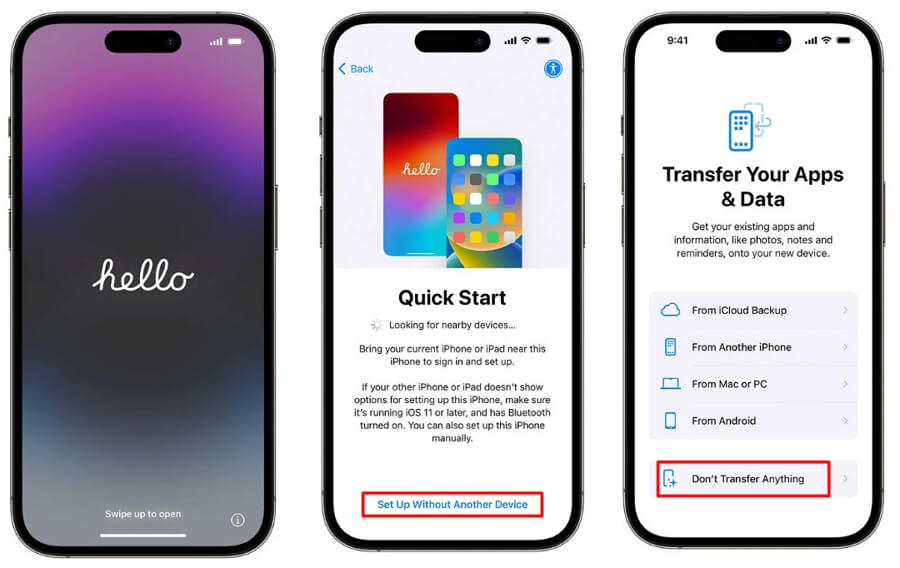
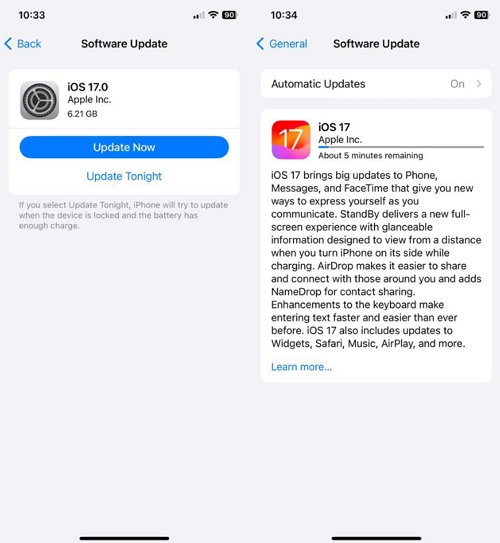
To transfer data to your new iPhone, you'll need to reset it first. Here's how:
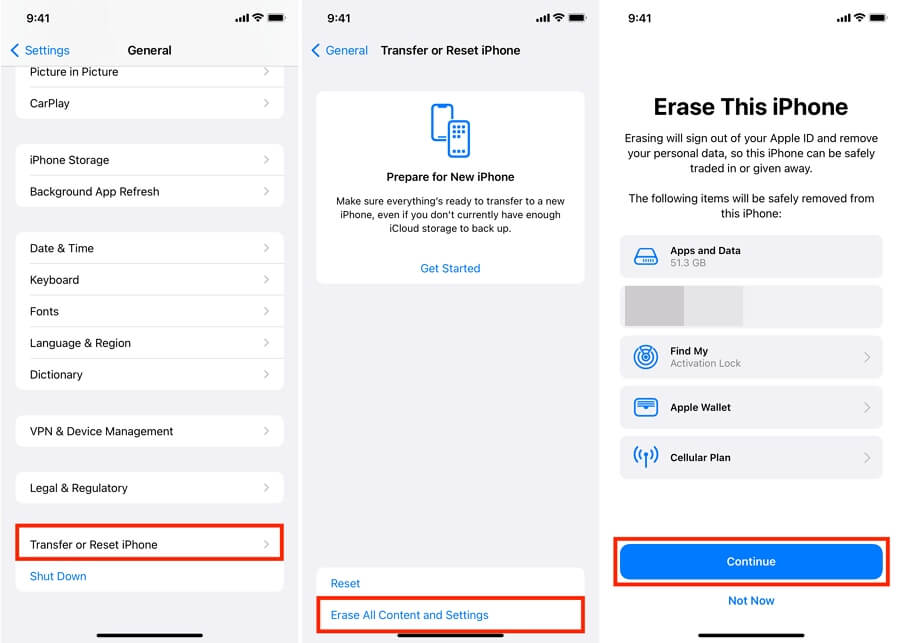
After updating your iPhone to the latest software and erasing your iPhone, you can now transfer your apps and data using any method you prefer:
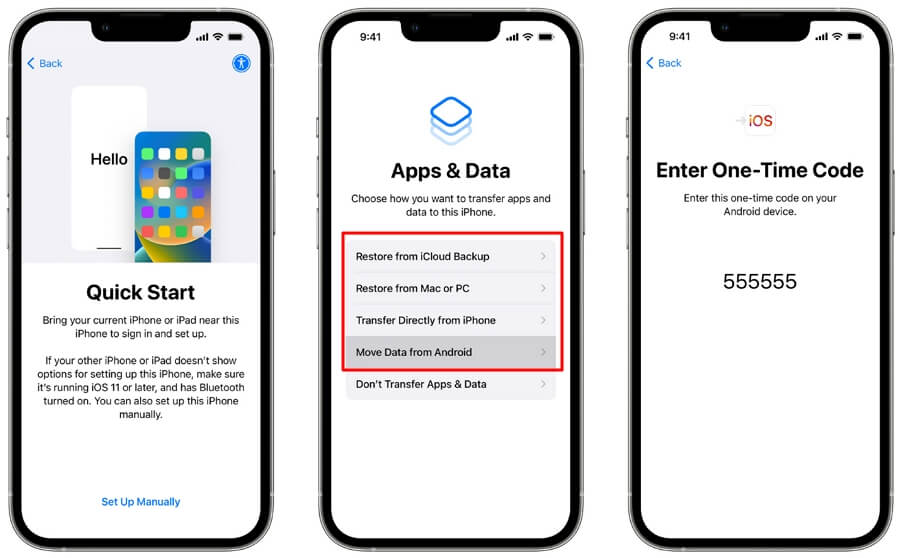
After your device restarts, if you prefer not to update your device over the air, you can try the following two ways to help you update your device using your computer.
Another alternative solution to update your iOS is using iTunes or Finder from your computer. Here's a step-by-step guide;
Step 1: Use a Lightning/USB-C cable to connect the iPhone to your Mac/PC.
Step 2: Click on the iPhone in the sidebar in Finder. If you're using a PC, open iTunes and click on the iPhone.
Step 3: Click on "Check for Update." If an update is available, click "Install," and your iPhone will be updated to the latest version of iOS.
If your iPhone is already up-to-date, you should restore the device by clicking on "Restore iPhone" and following the onscreen instructions.
Once the update or restore process is complete, your iPhone will reset, and you can begin the setup process again without updating your device.
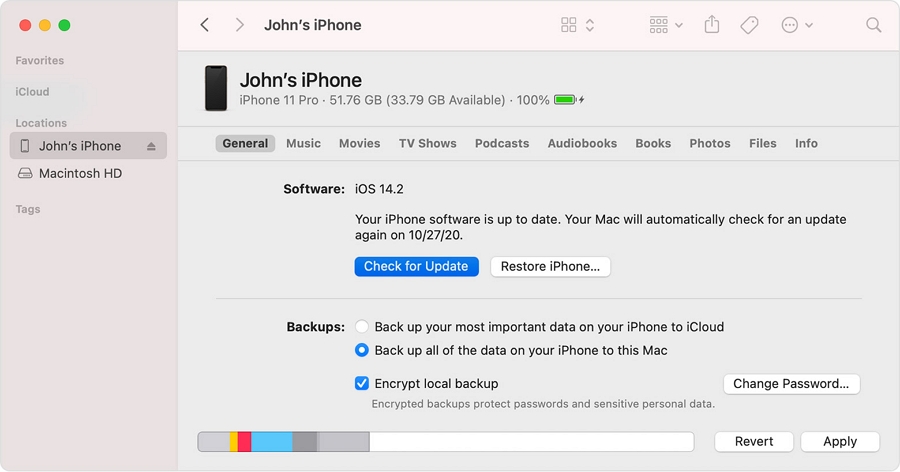
If all else fails, you can try to update the iPhone using TinyFix. TinyFix is a system repair tool for iOS devices, designed to help users resolve common iOS errors in a few minutes.
Its main advantage is that it can be used to fix your device without affecting your data, and it can also help you downgrade or update your device without iTunes. Here's how to update your iPhone using TinyFix:
Step 1: Download and install TinyFix on your computer. Launch the program after installation and then connect the iPhone to the computer. Click "Start."
Step 2: From the two repair options that appear on the screen, select "Standard Repair" to update your iOS without data loss and then click on the "Standard Repair" button.

Step 3: Click "Download" to allow the program to download the firmware that you need to restore the device.

Step 4: When the download is complete, click on "Start" to begin the process. In a few minutes, the program will notify you that the process is complete. Follow the instructions on the screen and when your device restarts, it should be as good as new.

Now you know that it is not possible to skip the software update when setting the new iPhone. However, the solutions above should help you overcome an iOS update process that slows down the setup of your new iPhone. While one or more of these solutions should work, if the problem persists, you may need to contact Apple Support for further assistance.
